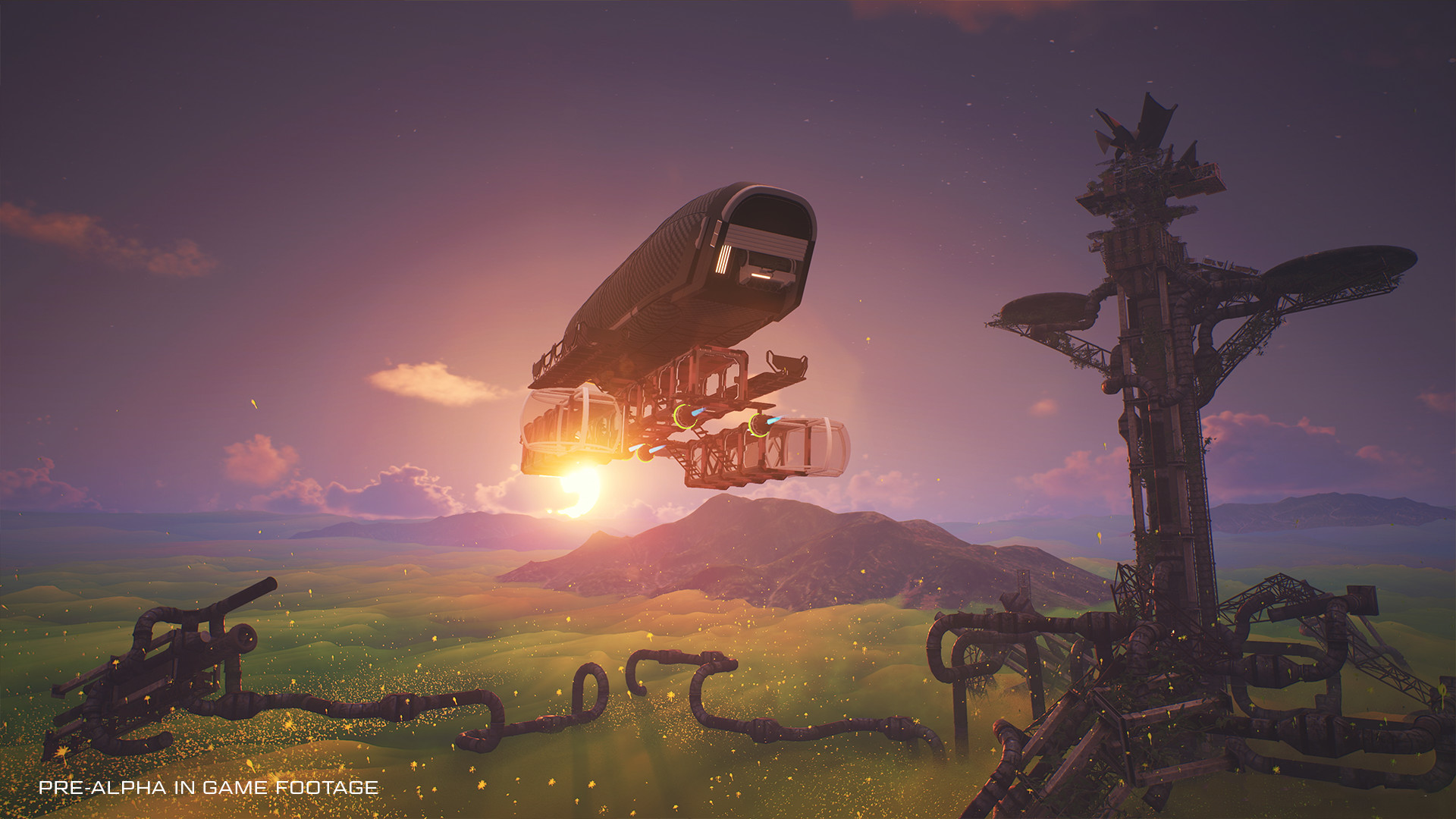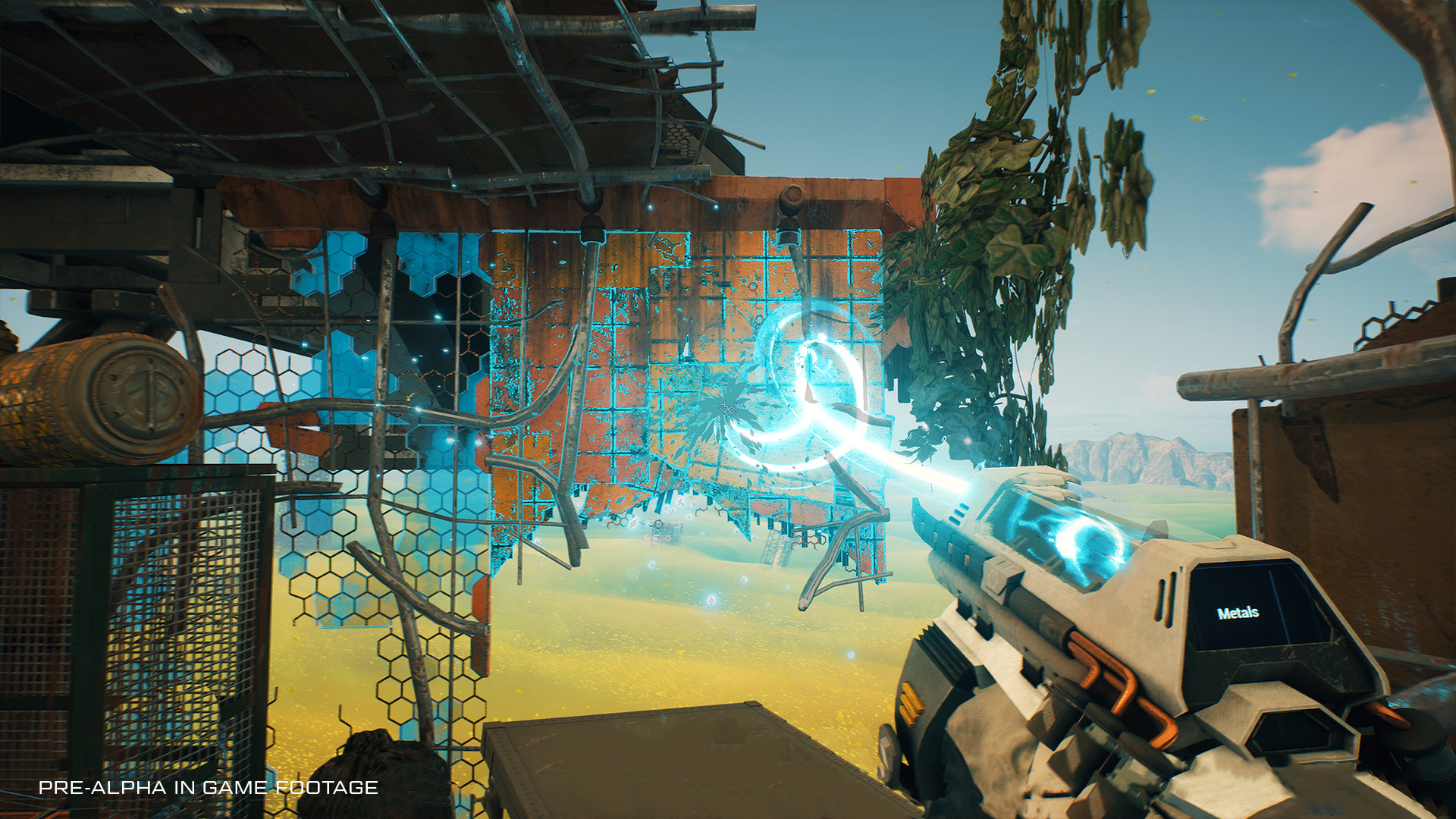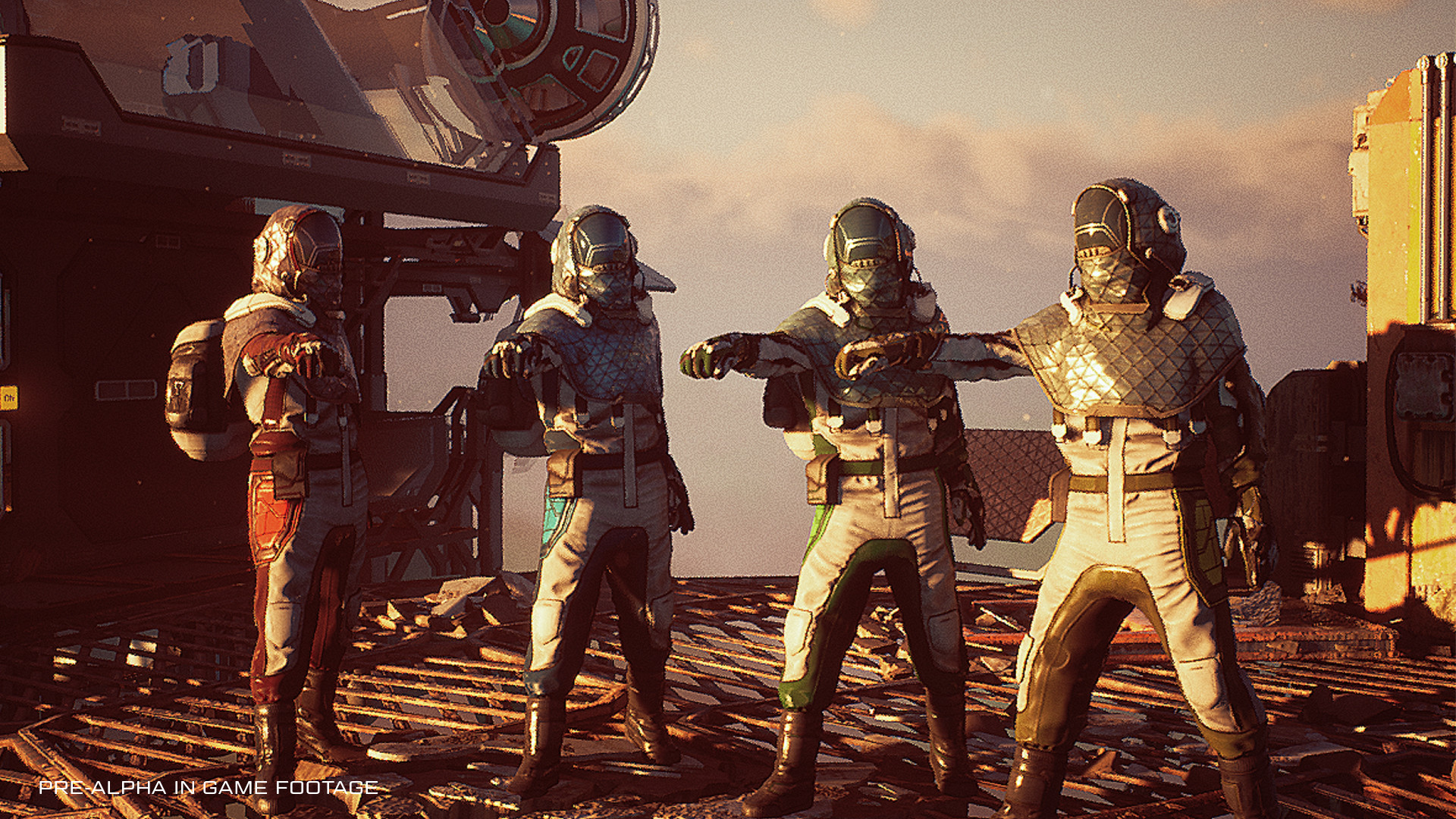
The survival genre has always had a very dedicated fanbase over the years, but lately, it’s a corner of gaming that has seen a very noticeable incline in popularity. One of the more interesting survival titles coming out in the not-too-distant future is Far From Home’s Forever Skies. From its ecological disaster narrative premise to its focus on verticality, from its flight gameplay to how it seems to be placing an equal emphasis on solo and co-op play, there’s plenty of reasons to be keeping an eye on this game- and that’s exactly what we’ve been doing here at GamingBolt. Recently, to get a clearer idea of what’ll make Forever Skies tick and what its developers’ biggest ambitions are for the experience, we reached out to Far From Home with a few of our questions, and we learned quite a bit about the game in the process. Below, you can read our interview with producer Radosław Pasternicki.
"Our goal here was to create a simple and fun building process, similar to Subnautica but combined with the freedom and creativity of The Raft."
Managing and customising your ship seems like it’s going to be a crucial element of Forever Skies’ core loop, but how much flexibility will the game options where those customization mechanics are concerned?
Let me start with a short introduction to Forever Skies. It is first and foremost a survival game which takes place a few hundreds of years in the future. You are returning to Earth, destroyed in a global environmental catastrophe. Our main protagonist is a scientist who gets to the planet’s surface in search of answers. He is coming from the orbit where in the last still functioning station, the remaining group of survivors is threatened by a mysterious disease and their fate is in the player’s hands.
You will start with a fairly modest version of an airship. Throughout the game, you will be able to upgrade and expand it based on blueprints found across the ruined skies, exactly to your tastes. Our goal here was to create a simple and fun building process, similar to Subnautica but combined with the freedom and creativity of The Raft. The protagonist will use the build tool to fabricate whole modular rooms and then operate on the level of single tiles in order to customise the room interiors. Players can build floors, ceilings and walls and reinforce them or for example change them into windows and add decorative elements. Interiors can be painted and fitted with different furniture in two modes – a basic one which allows for a speed building and a precision mode where furniture can be mounted in diverse positions and angles. Thanks to this approach each airship can be personalised and unique. Players will be able to build rooms and give them purposes and roles as they want. For example, the command deck where you will be able to see the status of the airship, a map of the nearby buildings, speed, altitude and more. A laboratory where you may discover new virus strains and then modify them to create boosters that may help you overcome some environmental challenges. Sleeping quarters where you will rest and replenish stamina. A medbay where you will be able to create medicine and perform body scans and procedures when needed. Gardens where you can grow new plants that may be a source of food and fuel. A kitchen which will allow you to prepare proper meals that will keep your immunity high and body fed. A relic museum full of items from the times of humanity on top of the food chain. But we shouldn’t forget about exteriors, catwalks, railings, water collectors and so on.
All of the above will keep a single player busy, but we already planned to take care of the above facilities by different players in the co-op mode. One player operates the rudder, another collects resources, conducts experiments and cooks dinner for the team. Another thing is the airship size when it will grow, it may require an additional balloon to support the weight, and more engines to move it with proper speed or reach higher locations.
I know I have thrown a lot of features at you but that’s not all – we hope to expand this list thanks to feedback from our community.
What can you tell us about ship flight in the game in terms of its mechanical depth, and how much of an emphasis the game places on that particular aspect?
First of all, flying around in a self-made zeppelin is a lot of fun. Control-wise this feels more like a helicopter than an airplane, as you control three-axis separately; forward-back, up-down and rotation.
Additionally, the environment will have an impact on airships and how it behaves. Flying during thunderstorms can be a different experience than flying in a sunny and clear sky. Even wind can change a lot, but players can learn how to take advantage of it and, for example, fly with it to get an additional boost or fly against it to try to collect resources that are carried by the wind. But flying may be challenging – manoeuvring in the debris fields and avoiding strong gusts of wind while undamaged may be difficult – especially with larger airship builds. In the end, the airship will get damaged and will need repairs.
What was mentioned briefly earlier – moving the airship requires fuel and finding the resources to produce it – will play an important role. Producing and using fuel will have its own progression and while in the start the only available option may be using “dirty” sources of energy, later in the game players will be able to move to green sources of fuel. It will be more efficient but will require additional technological advances. Because Forever Skies is a post-apocalyptic survival game, obtaining resources may not be that easy. In some cases they will require additional conversion into a new material, which can be done thanks to scientific methods our protagonist will be able to use. Another important aspect of flying the airship is the verticality of our game world. The remains of human civilisation are what’s left above the dust. Ruined skyscrapers and towers made by people escaping the collapse of the world they knew. These places are located at different altitudes and players will learn quickly that managing altitude is the key to exploration and survival. To get higher players will need to build turbines which will allow them to reach new places. Some locations may have landing pads as they were used by airships earlier, some may offer a dangerous approach and getting there may be tricky. While it may be risky, it may also be worth your time and allow you to get some rare items and resources. Who knows maybe with some rare and secret blueprints players will discover unusual ways of getting to seemingly unreachable locations?
"The world of Forever Skies is a semi-open sandbox, highly utilising procedural generation to build areas among pre-designed sections of the map for story beats."
How large will the game’s world be? Is exploration going to be an important part of the experience?
As described, exploration is key to finding stuff, which leads to making progress in the game. The world of Forever Skies is a semi-open sandbox, highly utilising procedural generation to build areas among pre-designed sections of the map for story beats. I can’t gauge the area in terms of square miles, let alone cubic miles, as exploration will be something different than is seen in survival games. Instead of running or galloping, you’ll be macro-exploring by flying. Then, after docking to one of many towers, you’ll micro-explore it on foot. Thus, I don’t think any surveyor-kind of area measurement will make sense here. Of course, there’s also the parallel world under the dust, but we keep it a mystery for now.
With both the skies and the surface explorable, it definitely feels like Forever Skies has big ambitions. How varied are those experiences from each other, and how do they tie into one another?
The game provides for two parallel realms: a vast endless horizon comprising destroyed remains of a post-human world, and a mysterious, vibrant and dangerous world under the dust. The former environment is all about tech, research, exploration and resource management, while the latter is thriving with new life forms and involves confrontation. Players will be only able to descend into the dust once they find surface lifts, some time into the game’s story. We still haven’t unveiled it in detail, so I’ll stop here, making a mark that it won’t be accessible from the start of the game.
How much of an emphasis does Forever Skies place on its story and storytelling?
There’s certainly a challenge to face as the player is arriving on Earth from its orbit where a group of descendants of survivors of the catastrophe are still alive, but not faring too well. Your mission is to come back with a cure for a mysterious disease. The story centres on possible long-term consequences of environmental disaster experienced firsthand, but in terms of balancing interactivity and storytelling, we absolutely give priority to gameplay. Narrative which I said comes second, isn’t by any means inferior. We’re crafting a remarkable storyline which will paint a meaningful background and build strong motivation for players’ actions, taking them through twists and turns.
After its early access launch, roughly how long will it be until the game hits its 1.0 launch? What are your plans for it during the early access phase in terms of the content and features you plan to add to it?
Early Access on Steam will deploy a single-player experience with plenty of mechanics and activities implemented in a vast world. It will outright allow for world exploration, gathering resources, reverse-engineering technologies, navigating and operating the airship, managing and maintaining the hull integrity and weight. The player will be able to build new modules and customise the interiors. As a part of the survival loop players will need to eat, drink, rest and take care of their health.
The next steps will involve some evolution, but largely tuning what we already have. The EA period is intended to add 4 player co-op, polish the overall experience, balance gameplay, and add features based on feedback from our community. Along with new content, we plan to focus on new devices and locations, new areas to explore, objects to build, as well as more customisation options for airships.
"We will actually launch Forever Skies as a solo experience and will deploy co-op as an add-on a bit later. This sequence will ensure that we have a strong story arch in place, with a satisfying, challenging and rewarding game loop, before we move to include cooperation."
You’ve expressed how important the co-op experience is to Forever Skies as a game, but is playing it entirely solo an equally viable experience?
No doubt. We will actually launch Forever Skies as a solo experience and will deploy co-op as an add-on a bit later. This sequence will ensure that we have a strong story arch in place, with a satisfying, challenging and rewarding game loop, before we move to include cooperation. One more word here; Far From Home recognises that these modes appeal to largely different tastes, and cater to different user groups. As with all of the content of Forever Skies, it’s our aim to listen to our community in regards to co-op mode, as soon as this mode will be launched.
Roughly how long will an average playthrough of Forever Skies be?
It is difficult to answer at this stage, but we’re aiming to deliver around 20 hours of gameplay in single-player in Early Access. It will certainly expand into a new dimension with the inclusion of the co-op mode. Of course, overall gameplay length may be affected by various aspects during the EA phase, like difficulty level and player’s focus on airship progress. We are also planning to add a full story mode ahead of full release, which is also likely to expand the length of gameplay. At this moment, we are focusing purely on gameplay – we want Forever Skies to deliver a diversity of experiences. Employing the mentioned procedural generation intends to nuance the game individually for everyone.
Do you plan on eventually bringing the game to the Switch as well?
To be honest – we would love to see our game available on as many platforms as it is possible, but we are a small studio and at this moment our main focus is to deliver the Early Access release on PC – once this will be completed we will be able to think about other platforms.
What are your thoughts on the Steam Deck? Do you have plans for any specific optimizations for the device?
Steam Deck is awesome. We very much want to see Forever Skies running on this platform. I can’t confirm anything right now, but it is certainly being considered.

















